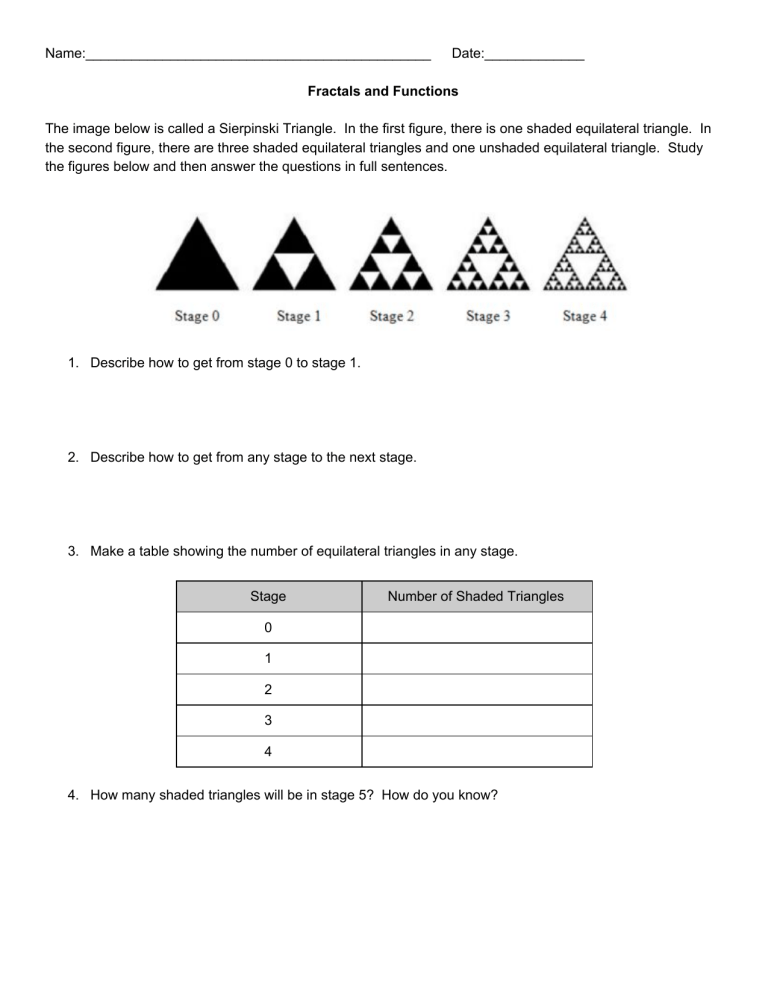
Name:_____________________________________________ Date:_____________ Fractals and Functions The image below is called a Sierpinski Triangle. In the first figure, there is one shaded equilateral triangle. In the second figure, there are three shaded equilateral triangles and one unshaded equilateral triangle. Study the figures below and then answer the questions in full sentences. 1. Describe how to get from stage 0 to stage 1. 2. Describe how to get from any stage to the next stage. 3. Make a table showing the number of equilateral triangles in any stage. Stage Number of Shaded Triangles 0 1 2 3 4 4. How many shaded triangles will be in stage 5? How do you know? 5. Suppose the black triangle in stage 0 has an area of 1. What is the area of one of the black triangles in stage 1? How do you know? 6. What is the area of one of the black triangles in stage 2? How do you know? 7. Make a table showing the area of one of the black triangles from stage 0 - 4. Then describe how to calculate the area of one black triangle from any stage to the next stage. Stage 0 1 2 3 4 8. Now make a table to show the TOTAL area of the black triangles from stage 0 to stage 4. Remember, the area of the black triangle in stage 0 is 1. What do you predict the total area of the balck squares in stage 5 will be? 9. Now do the inverse of Question #8. Make a table to show the total area of the white triangles from stage 0 to stage 4. (Hint: What is the area of the white triangles in stage 0? How can you use the area of the black triangles to calculate the area of the white triangles?) 10. EXTRA: Go to http://www.shodor.org/interactivate/activities/KochSnowflake/ to learn about Koch’s Snowflake. If the perimeter of the first stage is 3 (each segment is 1 unit), how long is each line segment in stages 1 - 4? What is the perimeter? What is the length of a segment in stage n? What is the perimeter in stage n?



